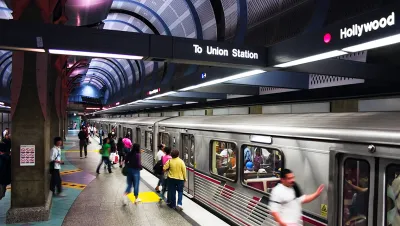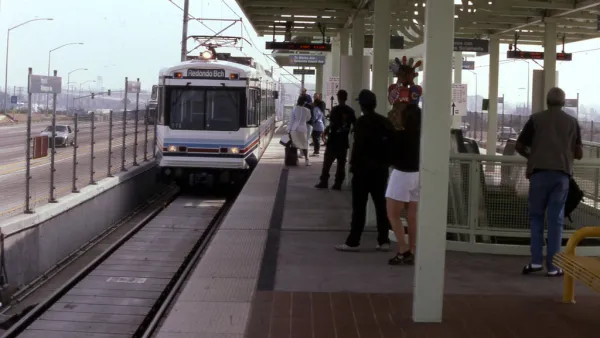The editorial board of the Los Angeles Times is unimpressed by a plan to build a monorail between the Westside and the San Fernando Valley in the city of Los Angeles.

The Los Angeles County Metropolitan Transportation Authority (Metro) recently updated its plan to build a rail transit connection across the Sepulveda Pass, a busy corridor currently served by the constantly congested Interstate 405, narrowing down the options to two, including a monorail.
The Los Angeles Times Editorial Board is unimpressed.
This is likely to be the biggest, most impactful transit project on the horizon for Los Angeles. It’s the most important missing link of the regional transit system, and done well, it could enable the next generation of Angelenos to work, play and travel without a car.
So why are we even considering a monorail?
The editorial lays the snark on thick—saying that monorail technology was cutting edge 50 years ago and comparing the renderings of the plan to Disneyland—but also tackles the proposal on its merits. While the project team behind the monorail proposal say the system would be cheaper and more efficient than a heavy rail alternative, the editorial board questions whether that promise can be delivered.
The editorial board also critiques a key element of the plan that is relevant to transit systems all over the county: running the new rail line in the middle of the freeway.
Haven’t we learned the fallacy of putting rail lines in the middle of a freeway? It is an unpleasant experience for passengers, who have to wait for their train on a noisy, exhaust-choked platform. And a monorail built over a 10-plus-lane freeway surrounded by buffers and surface streets would be hard for commuters to reach. The most successful transit lines drop people off close to their destinations.
A subway would be faster, more pleasant and more easily connected to other routes in the Metro system, according to the editorial.
FULL STORY: Editorial: Forget the monorail. L.A. needs a real transit line through the Sepulveda Pass

Analysis: Cybertruck Fatality Rate Far Exceeds That of Ford Pinto
The Tesla Cybertruck was recalled seven times last year.

National Parks Layoffs Will Cause Communities to Lose Billions
Thousands of essential park workers were laid off this week, just before the busy spring break season.

Retro-silient?: America’s First “Eco-burb,” The Woodlands Turns 50
A master-planned community north of Houston offers lessons on green infrastructure and resilient design, but falls short of its founder’s lofty affordability and walkability goals.

Test News Post 1
This is a summary

Analysis: Cybertruck Fatality Rate Far Exceeds That of Ford Pinto
The Tesla Cybertruck was recalled seven times last year.

Test News Headline 46
Test for the image on the front page.
Urban Design for Planners 1: Software Tools
This six-course series explores essential urban design concepts using open source software and equips planners with the tools they need to participate fully in the urban design process.
Planning for Universal Design
Learn the tools for implementing Universal Design in planning regulations.
EMC Planning Group, Inc.
Planetizen
Planetizen
Mpact (formerly Rail~Volution)
Great Falls Development Authority, Inc.
HUDs Office of Policy Development and Research
NYU Wagner Graduate School of Public Service



























